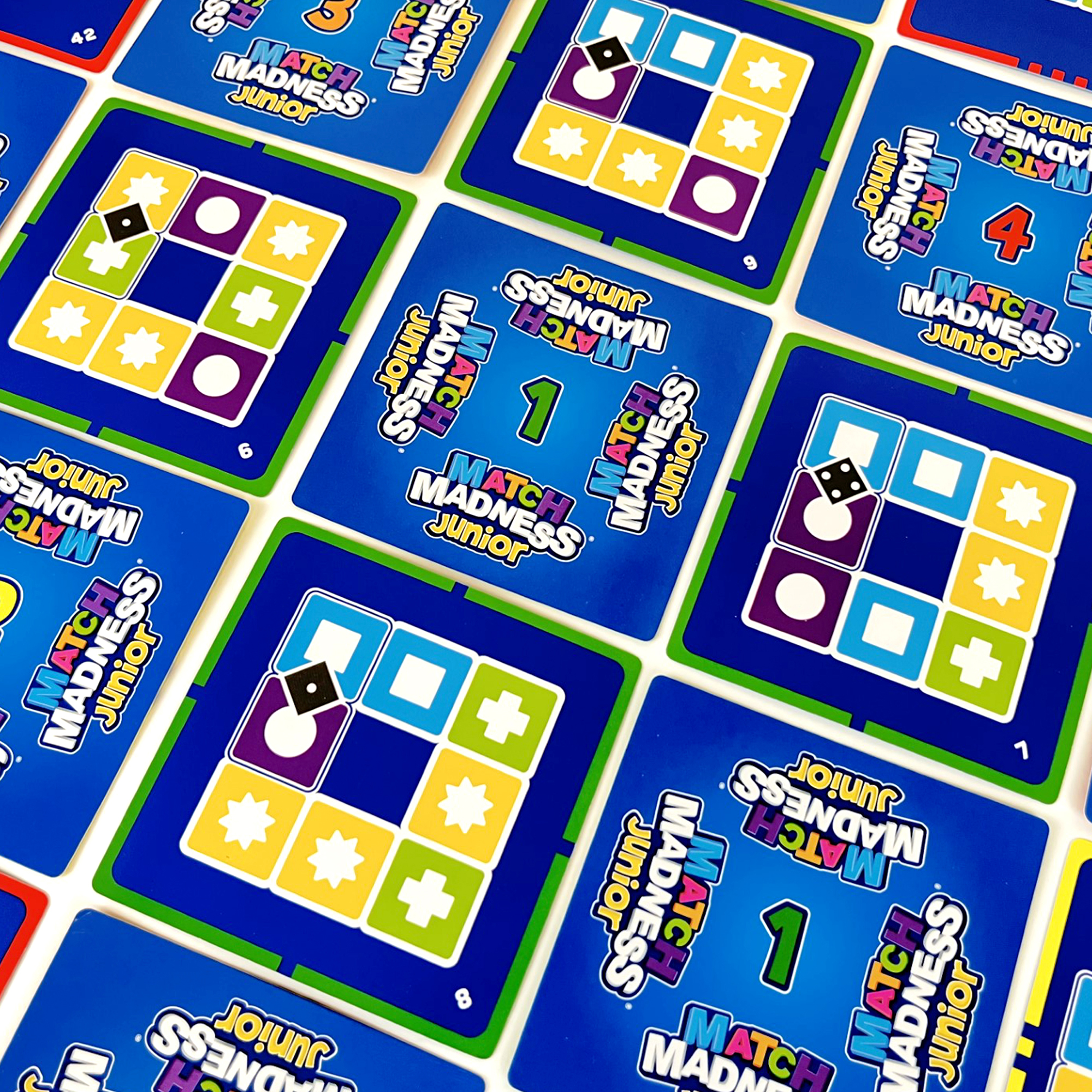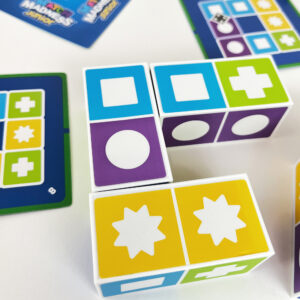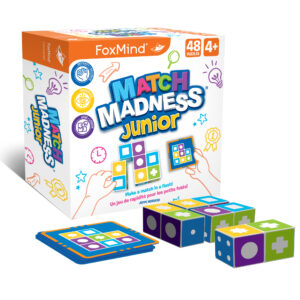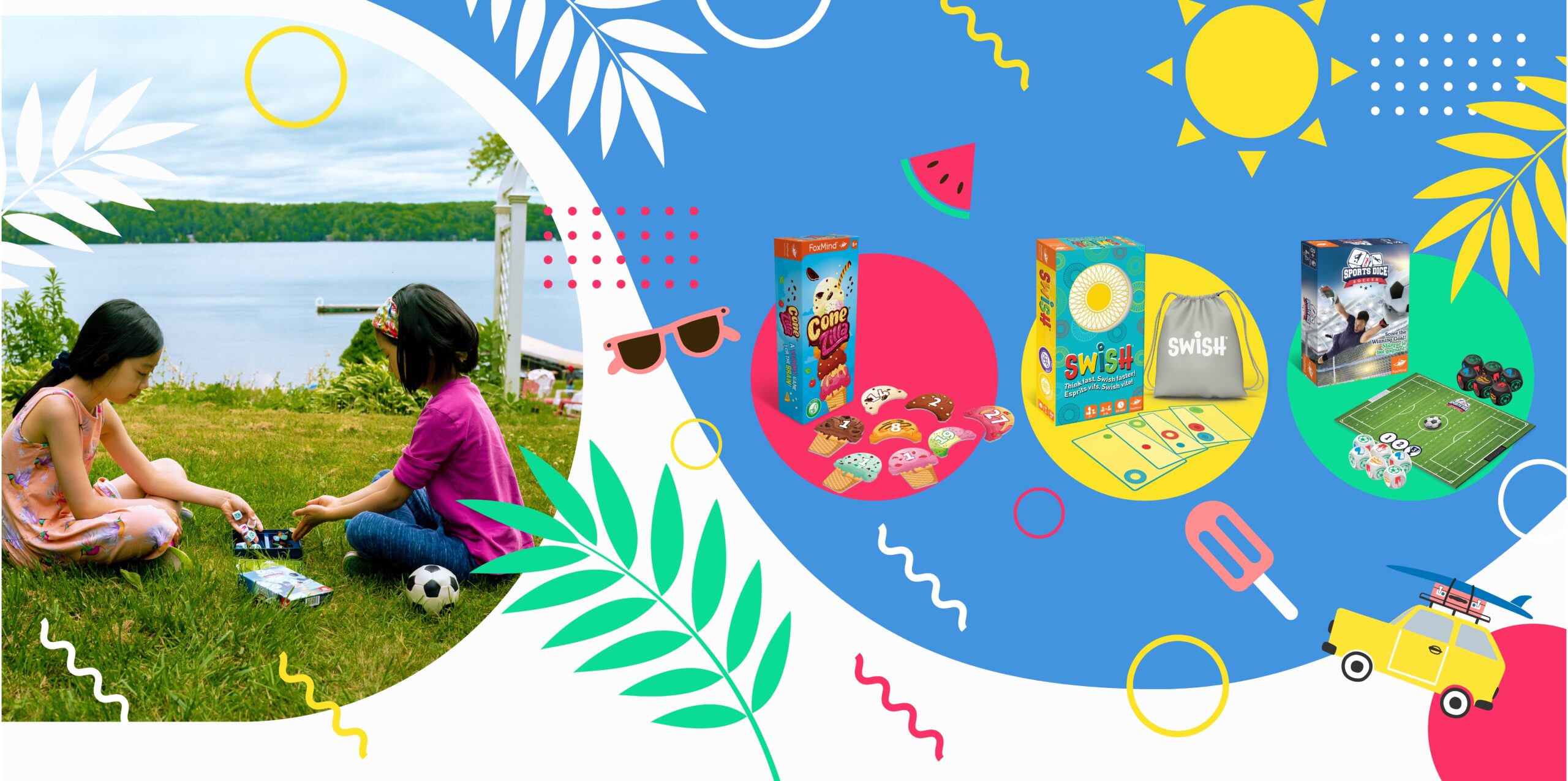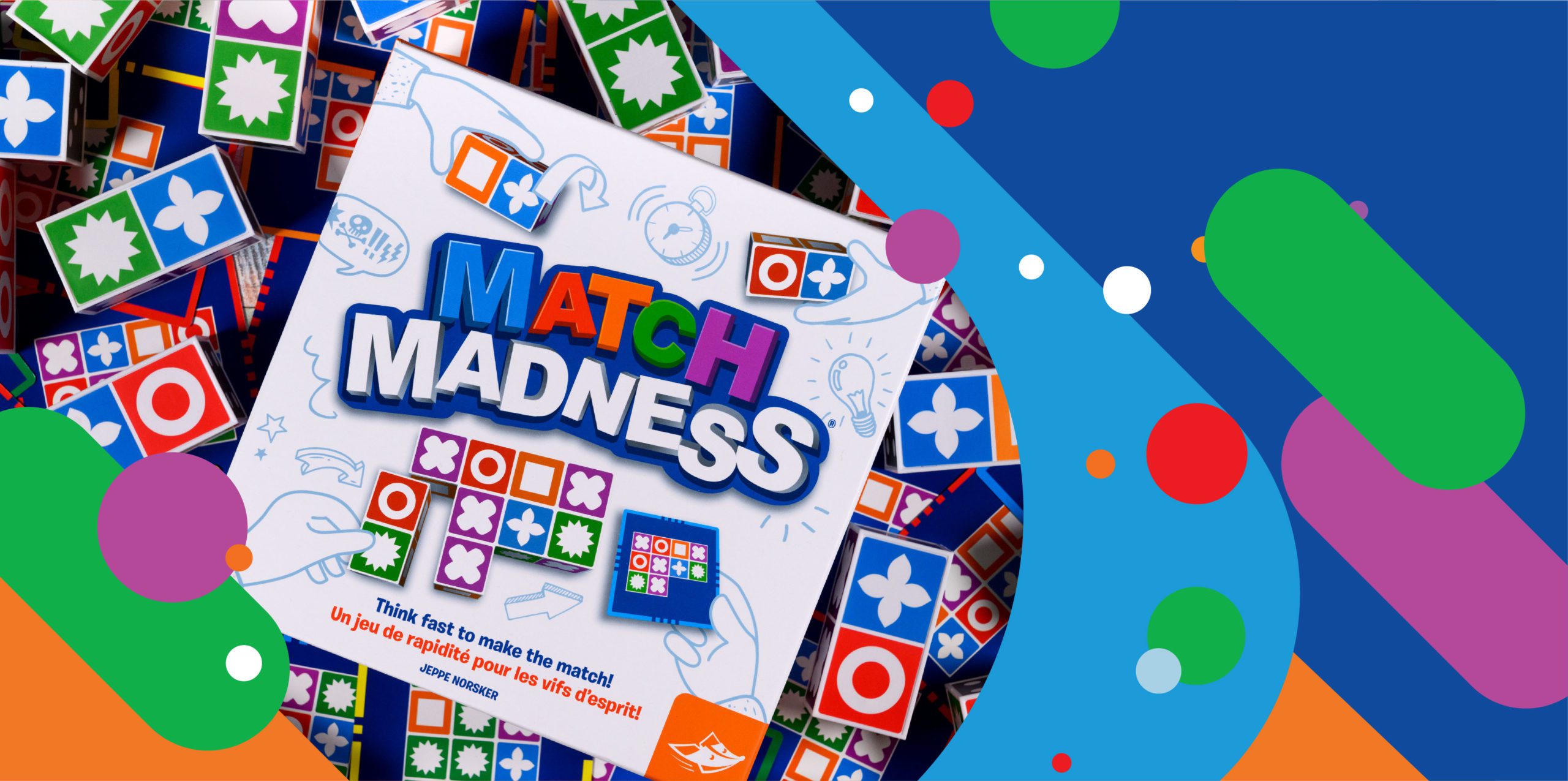BY JC DORAIS* – Head of Development
As a father of four wonderful little individuals, my perspective on board games has completely changed. My kids have opened my eyes and helped me stop overanalyzing what is actually pretty simple: the SMILE factor which is the one thing that makes a game a GREAT GAME.
No matter what the game is about, even if the design isn’t perfect or the gameplay feels repetitive, if it puts a genuine smile on a child’s face, again and again, then it’s doing something right.
At home, I’ve officially appointed my 6-year-old son as “Head of Playtesting.” He’s amazing at giving me the most honest feedback possible, totally unfiltered. I often hear things like:
“Dad, your game is boring. lets stop now.”
or
“This is AMAZING! You have to make this game today!”
And honestly, he’s usually spot on.
From Anger to Pure Fun: The Birth of Match Madness Junior
When we released Match Madness Junior, my son was just 4 years old. Even back then, he was already curious about the Match Madness classic blocks. He’d play with them but couldn’t quite solve the puzzles and it really frustrated him.
That made us stop and ask ourselves: How can we help younger kids enjoy Match Madness the same way older kids and adults do?
So we sat down together. As he tried to solve one of the puzzle cards, I noticed something right away. He kept getting stuck when two symbols on a block changed at the same time. That moment led our team back to the drawing board.
We designed new puzzles that would teach kids how to handle those dual-symbol flips. We also added clues to the puzzle cards to offer just the right amount of help for a 4-year-old to succeed.
And that’s when the SMILE factor really showed up.
I’ll never forget the look on my son’s face when he solved his first Match Madness Junior puzzle. He was glowing. Since then, he’s completed them all, moved on to the classic version, and now he wants to challenge his friends.
Why We Do What We Do
That’s what we aim for at FoxMind: getting that smile, again and again.
There’s nothing better than seeing a child pick up one of our games, light up, and ask, “Can we play this?”
The magic is in how simple and pure the fun feels, especially through a child’s eyes. And that’s what we’re always chasing: honest joy, shared moments, and games that truly connect.
*This article was written by me and lightly revised with the help of AI for grammar and clarity.

